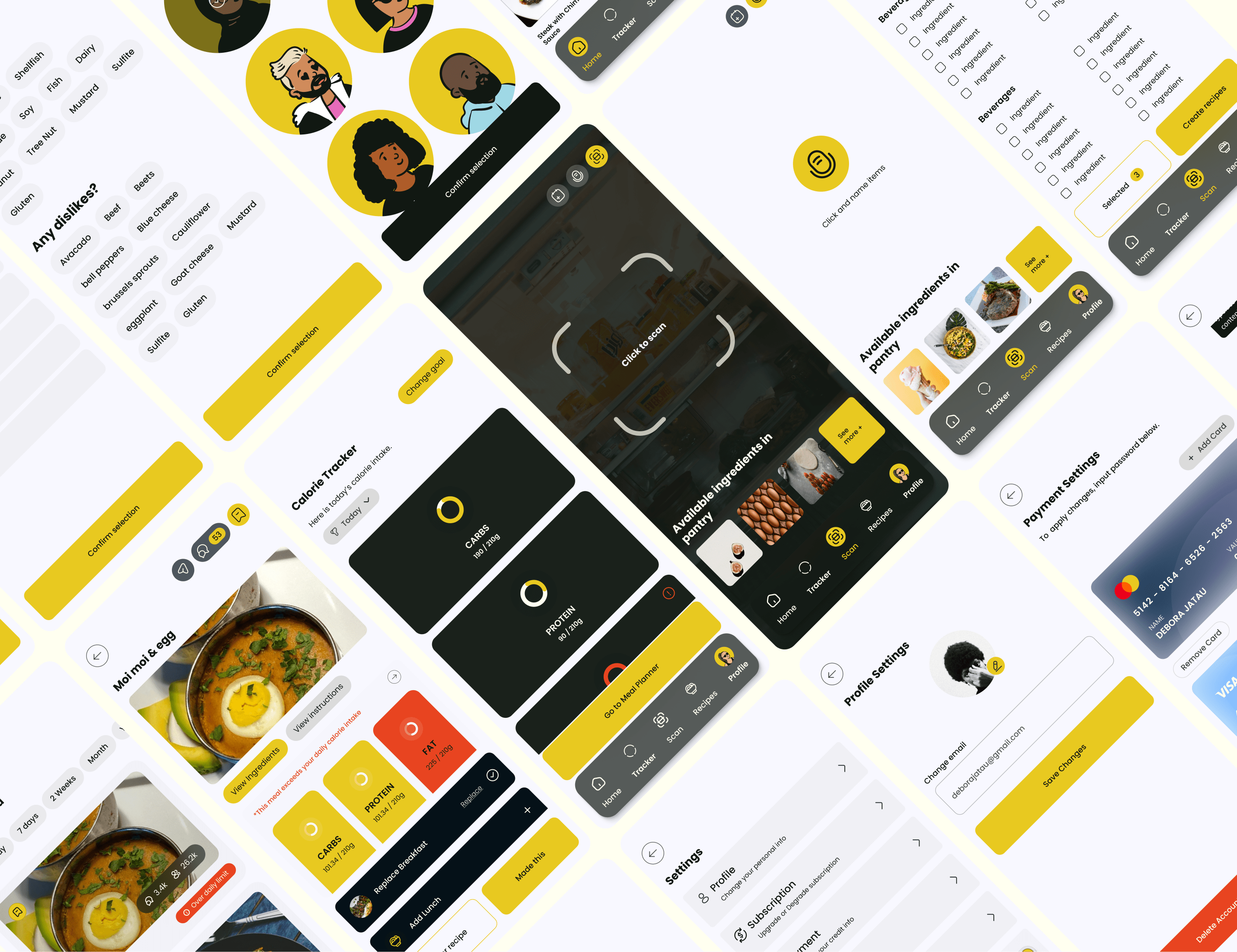Bingeefy
What if your fridge could tell you exactly what to cook?
Figma
UX Design
UI Design
Prototype

INTRODUCTION

Bingeefy set out to build an AI-powered app that could turn whatever ingredients a user had into recipe recommendations. The app allowed users to scan items with their camera, select ingredients from a list, or call them out for the AI to recognise. Along side recipe suggestions, the platform also included a calorie tracker, ingredient marketplace, restaurant ordering options, community recipe sharing, and Meal Planning (Calender).

The Challenge

The vision was ambitious — combining five major features into one app — which meant balancing scope, usability, and design clarity. While I recommended a staged, beta-style release to allow features to be refined with real-time user data, the decision was made to launch all features together. This required a design that made everything accessible without overwhelming the user.

Deliverables

Ingredient Scanning & Selection
Designed three ways for users to add ingredients — scanning with the camera, manual selection from an in-app list, and voice input via AI recognition — making the process flexible and accessible.

Navigation & Feature Access
With multiple high-value features, I used a dropdown menu for secondary options, while the bottom navigation highlighted the most-used tools like ingredient scanning, recipe suggestions, and meal tracker.
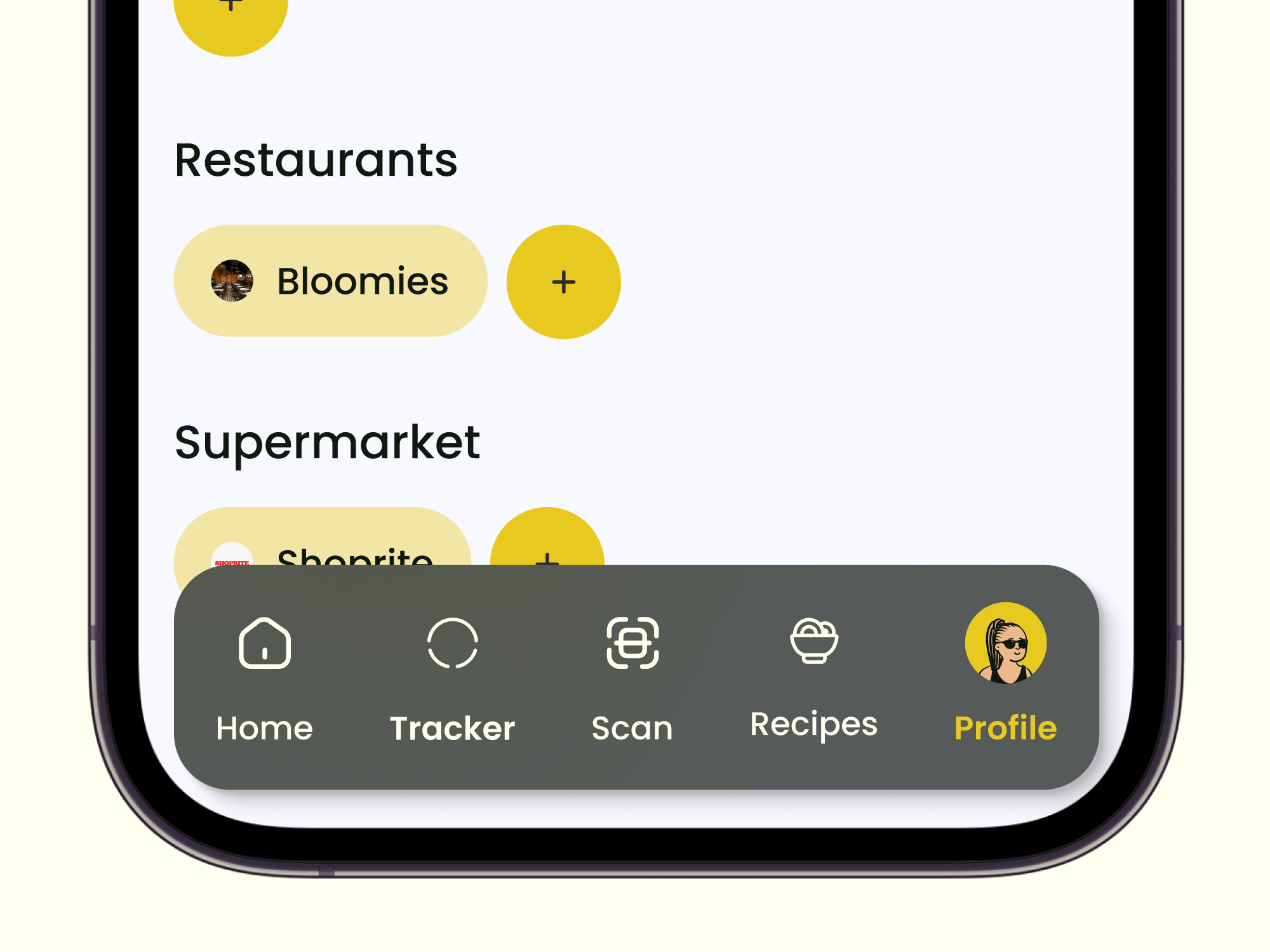
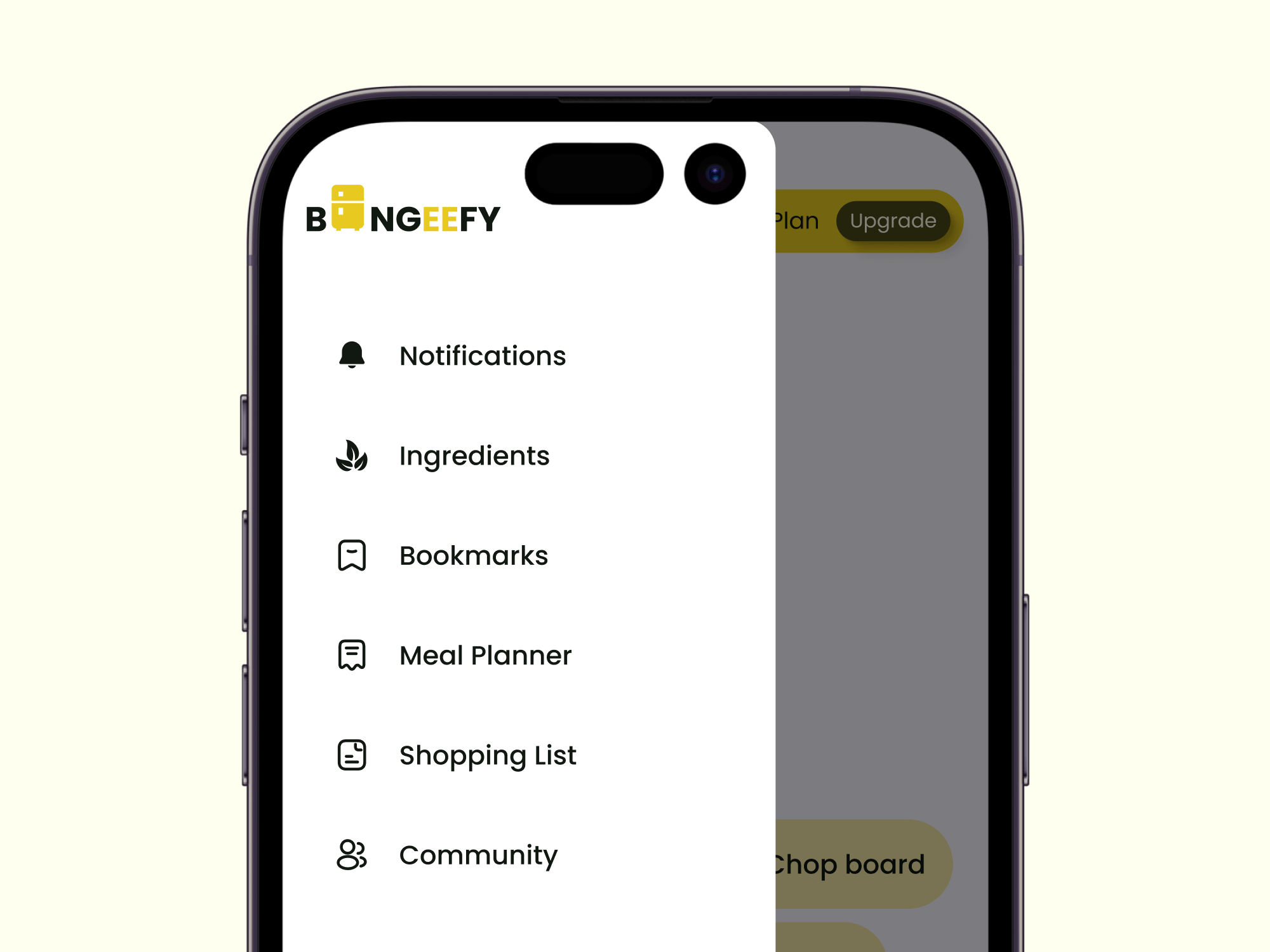
Recipe Recommendations
Created recipe result screens that dynamically calculate total calories based on selected ingredients, with step-by-step instructions and integrated video guides for each dish.
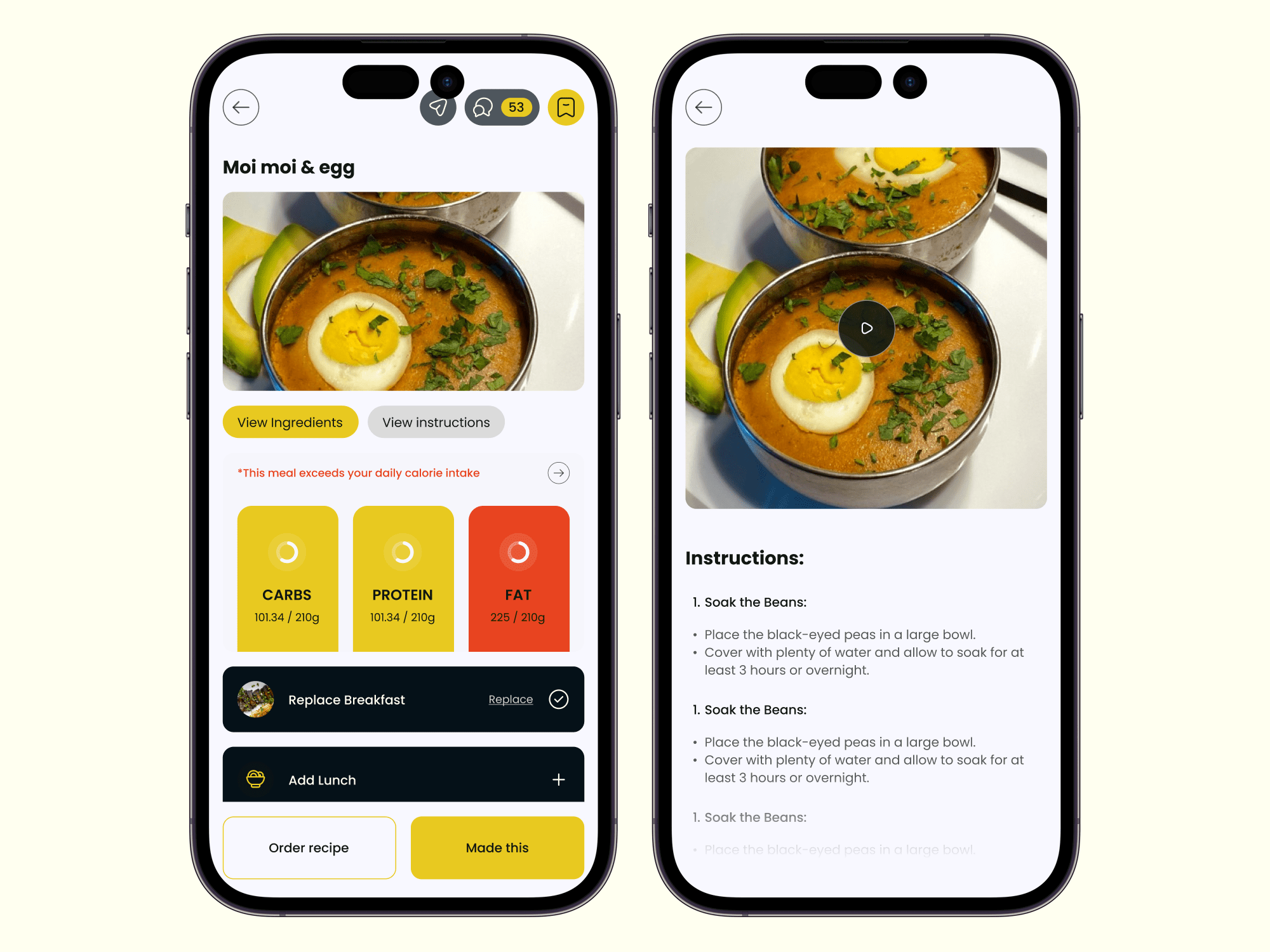
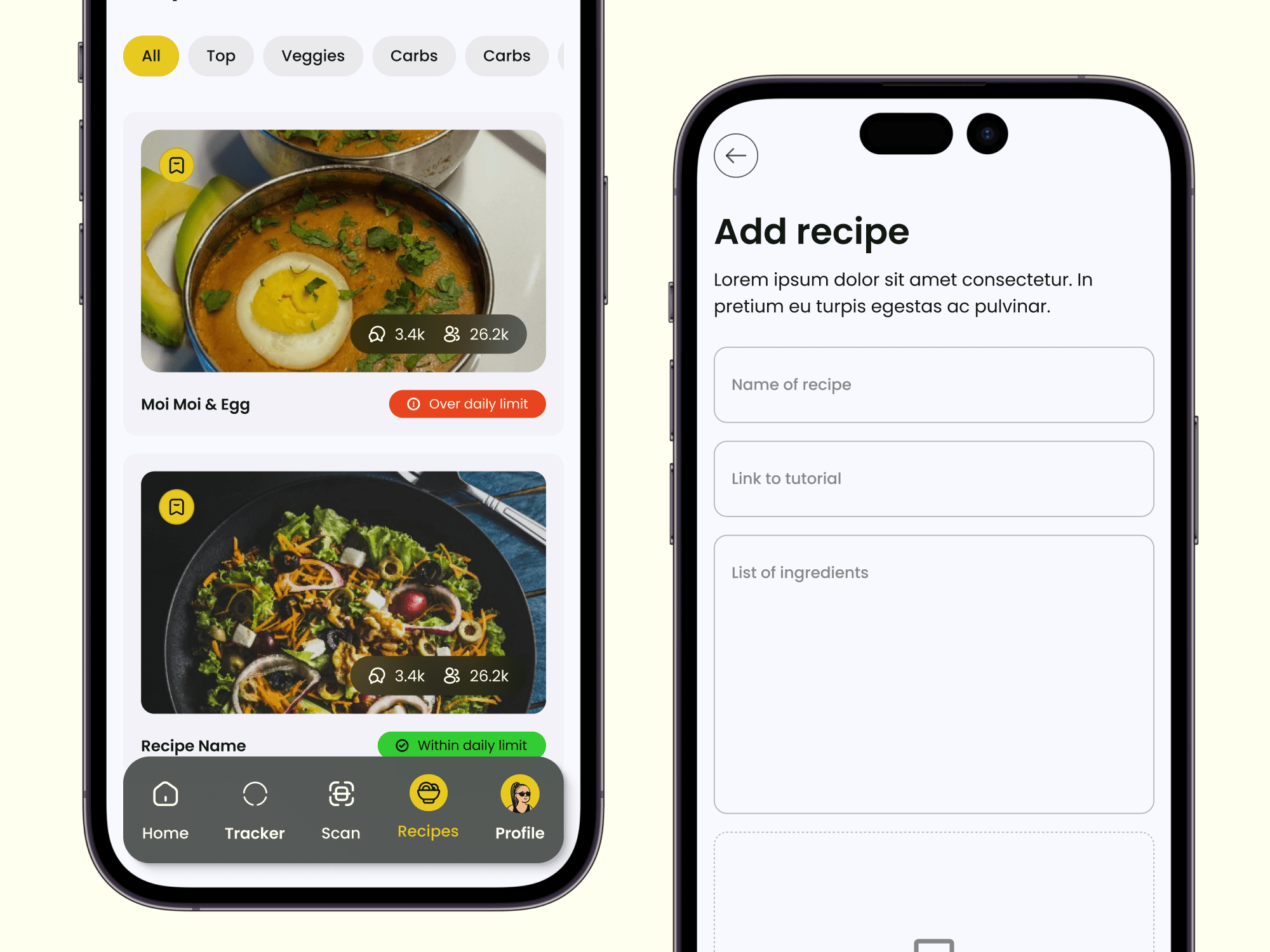
Calorie Tracker
Built a tracker that lets users set a daily calorie limit and receive notifications when they’re close to exceeding it. Calorie counts are automatically factored into all recipe recommendations.
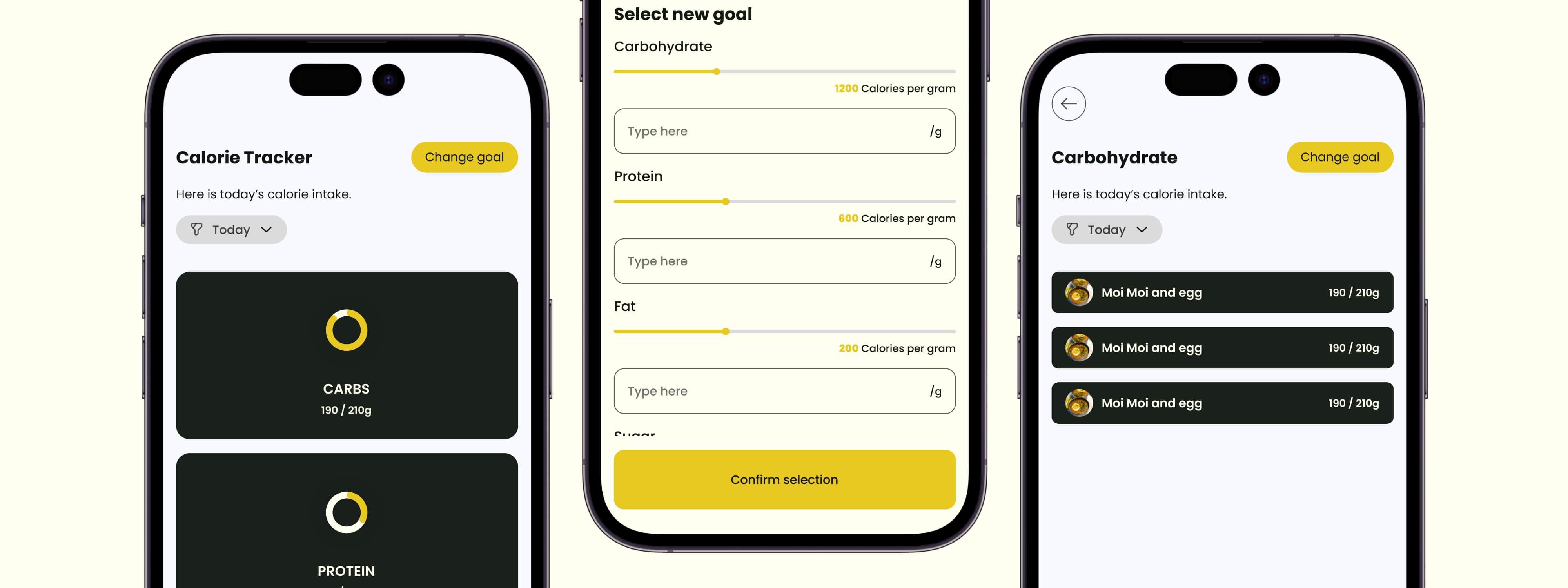
Meal Planner & Calendar Integration
Designed a meal planning tool that allows users to schedule recipes by day and time, fully integrated with a calendar view for easy planning.
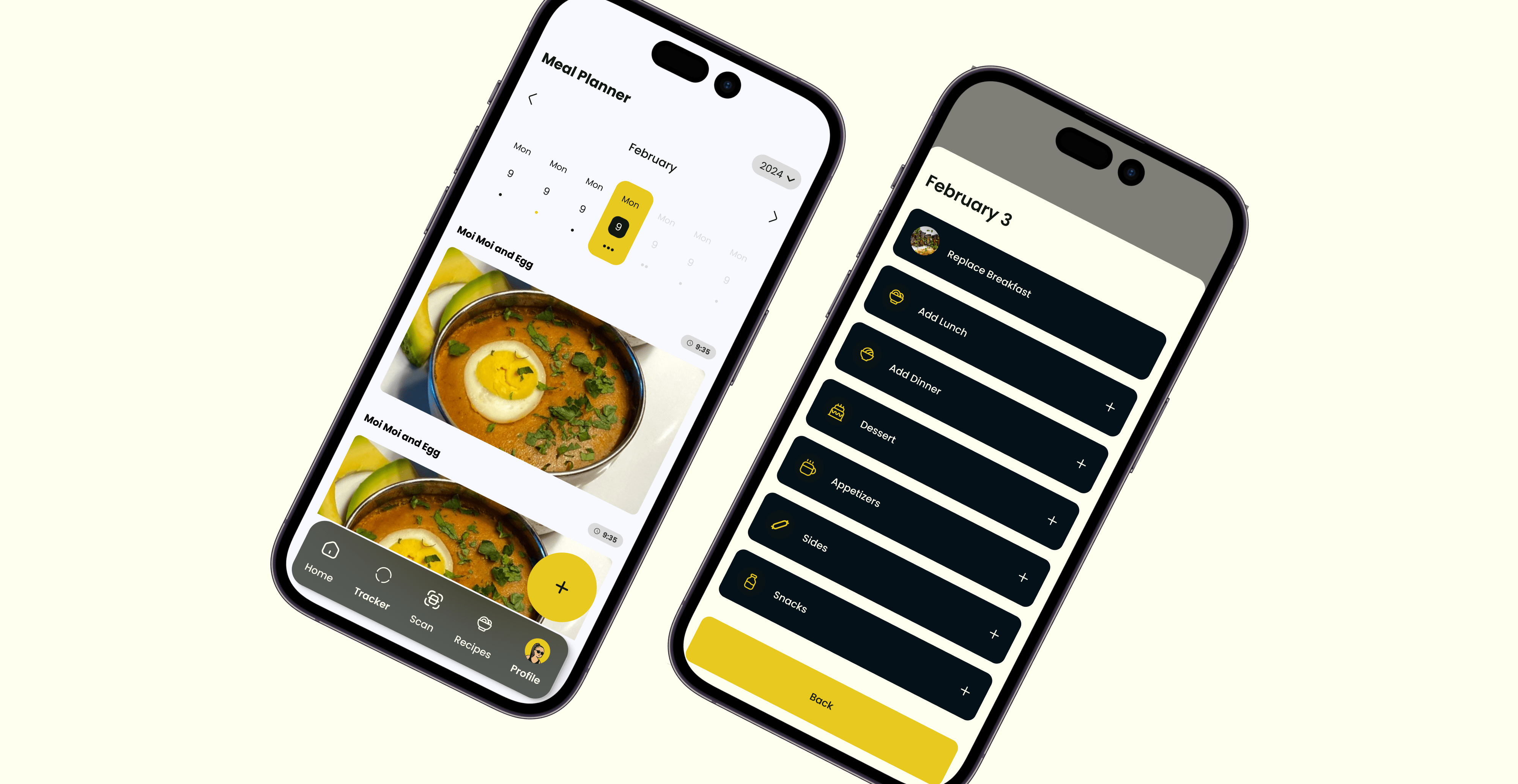
Community & Social Features
Enabled users to join or create food groups, post progress articles, share recipes, and get notified when other members try their shared dishes — encouraging engagement and knowledge sharing.
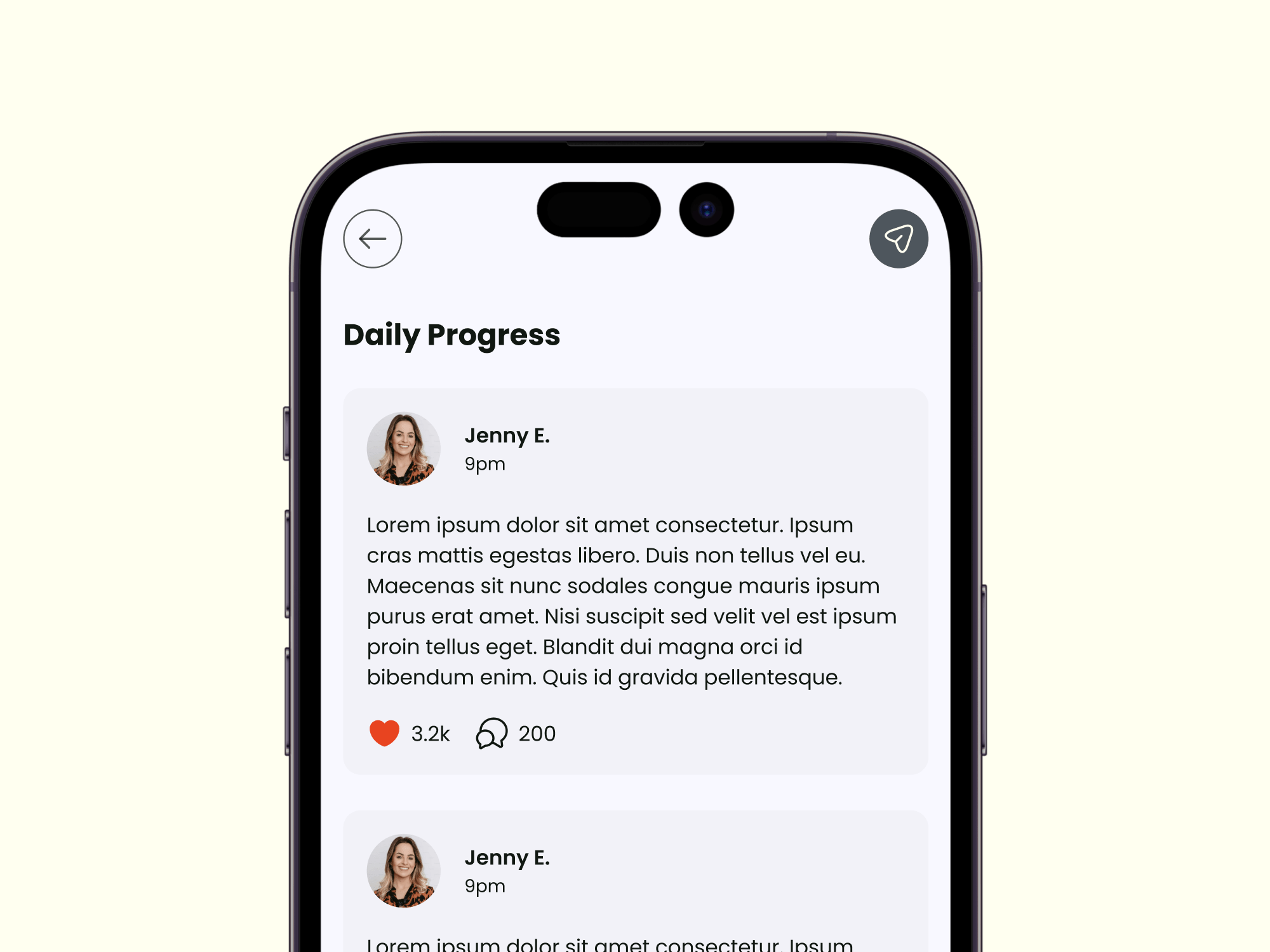
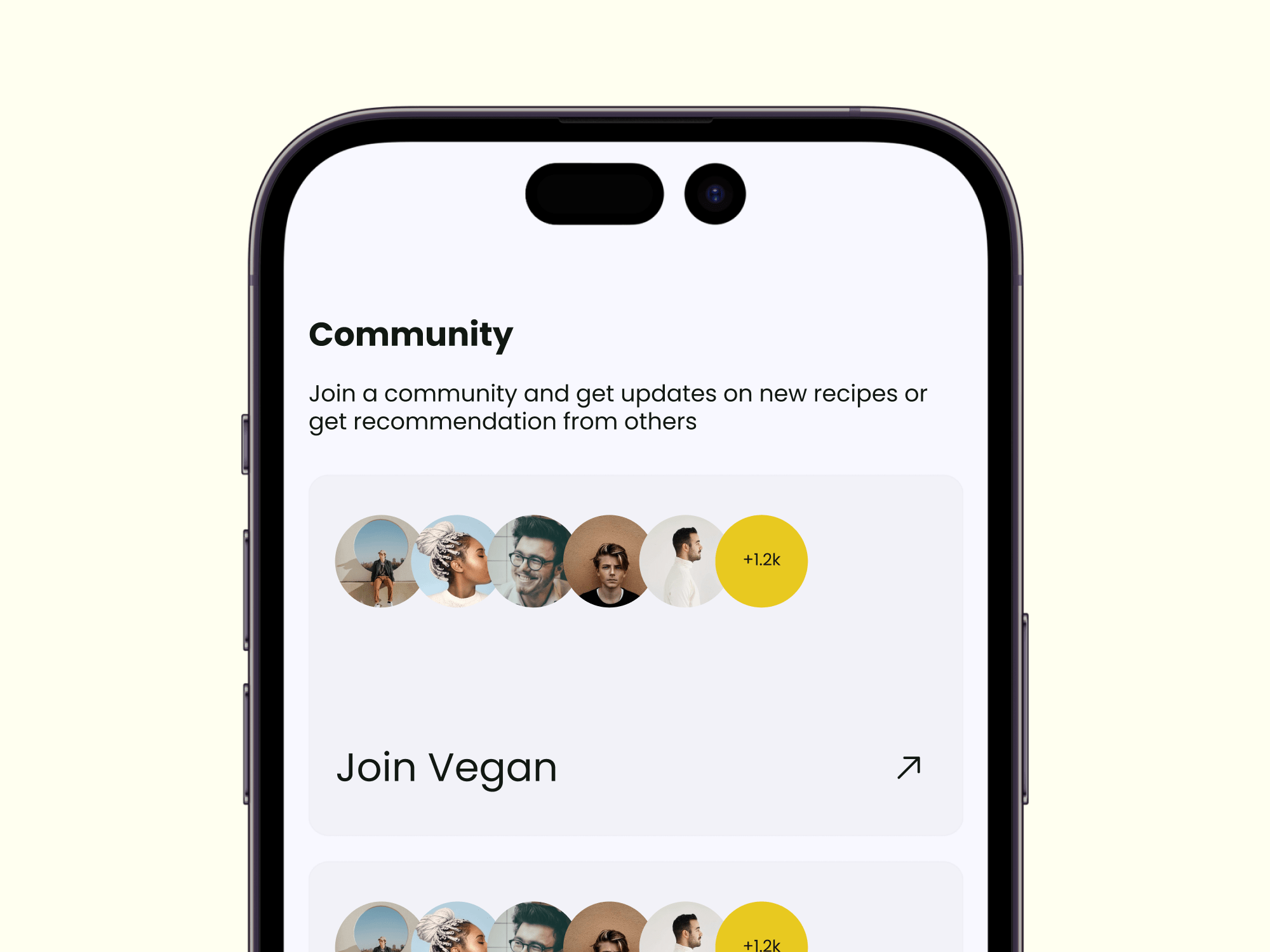

RESULTS

The design was approved and prepared for development. While the product has not yet launched, the project provided valuable insight into designing for complex, multi-feature platforms. The experience reinforced the importance of aligning scope with a clear primary focus, while still delivering a design system ready to support future growth.
